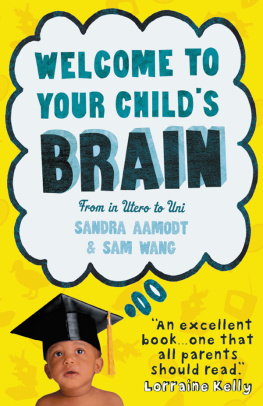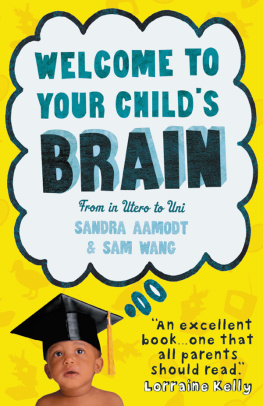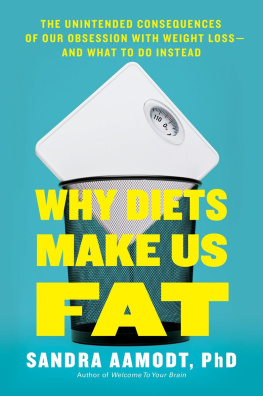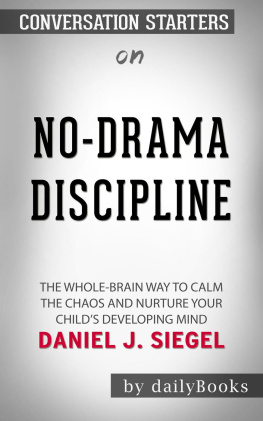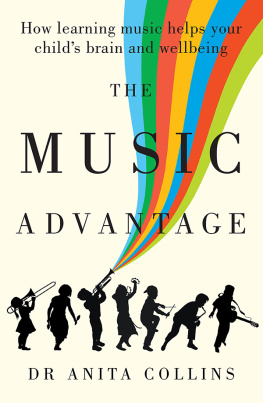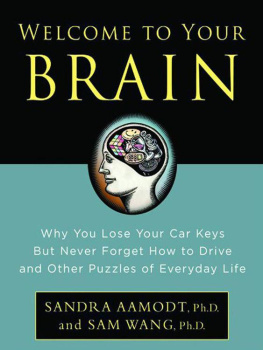ADVANCE PRAISE FOR
WELCOME TO YOUR CHILDS BRAIN
An excellent bookone that all parents should read.
Lorraine Kelly
The scientific evidence clearly shows that a childs future well-being depends crucially on early parent-infant interactions. As a parent this responsibility can seem daunting. Yet, help is now at hand with this exciting book which offers an excellent tour of the latest scientific evidence of how childrens brains develop, at every age.
Morten L. Kringelbach, Professor of Neuroscience at the University of Oxford and University of Aarhus, and author of The Pleasure Center
Dr Wang and Dr Aamodt playfully and engagingly introduce us to the hidden talents of our childrens brains.
Mehmet Oz, MD, Host of The Dr Oz Show
Few humans are as neurotic as parents, frantic about the disastrous lifelong consequences of every errant hiccup. In this intelligent, funny, accessible, and supremely sane book, Aamodt and Wang explain that our supposed knowledge in this realm is riddled with urban myths and that a childs brain is tough and resilient in the face of adversity. Terrific, fun, and educational.
Robert Sapolsky, Professor of Biological Sciences at Stanford University and author of Why Zebras Dont Get Ulcers
Fact-filled and fascinating, Welcome to Your Childs Brain will answer many of parents most urgent questions. Neuroscientists Sandra Aamodt and Sam Wang present the real data that will help parents understand and nurture their children of all ages.
Lise Eliot, Associate Professor of Neuroscience at Rosalind Franklin University and author of Pink Brain, Blue Brain
The human face of neuroscience: a wonderful application of cutting-edge science to everyday life. In an era where technology is transforming childrens environments in unprecedented ways, heres a guide for understanding how their brains will adapt, and how parents can help those brains maximize the opportunities.
Baroness Susan Greenfield, author of ID and Tomorrows People
BY THE SAME AUTHORS
Welcome to Your Brain:
The Science of Jet Lag, Love and Other Curiosities of Life
WELCOME TO
YOUR
CHILDS
BRAIN
From in Utero to Uni
SANDRA AAMODT
AND SAM WANG
A Oneworld Book
First published in the United Kingdom and Commonwealth by Oneworld Publications 2011
This ebook edition published by Oneworld Publications 2011
Copyright 2011 by Sandra Aamodt and Sam Wang
The moral right of Sandra Aamodt and Sam Wang to be identified as the Authors of this work has been asserted by them in accordance with the Copyright, Designs and Patents Act 1988
All rights reserved
Copyright under Berne Convention
A CIP record for this title is available from the British Library
ISBN 978-1-85168-865-4
Art credits:
Illustrations throughout by Lisa Haney, except as noted. Pages courtesy of Roger Tsien and Le Prix Nobel 2008.
Cover design by Leo Nickolls
Designed by Elizabeth Van Itallie
Printed and bound in Great Britain by Page Bros, Norwich
Oneworld Publications
185 Banbury Road, Oxford OX2 7AR, England
Learn more about Oneworld. Join our mailing list to find out about our latest titles and special offers at:
www.oneworld-publications.com
From Sandra, to my parents, of course
From Sam, to Vita, Becca, Rita, and Dad
Quiz
How Well Do You Know Your Childs Brain?
) Which of the following is a good way to get your child to eat his spinach?
a. Cover the spinach in melted cheese
b. Start the meal with a few bites of his pudding
c. Feed him with soy-based formula as an infant
d. All of the above
e. None of the above
) Which action by a pregnant woman poses the greatest risk to her baby?
a. Having a pint at the pub one evening
b. Fleeing from a hurricane
c. Eating sushi for dinner
d. Flying in an aeroplane
e. Walking three miles
) What fraction of the calories eaten by a five-year-old go to power her brain?
a. One tenth
b. One quarter
c. One half
d. Two thirds
e. Nearly all
) How do your childs genes and his environment interact during development?
a. His genes influence his sensitivity to environmental features
b. His environment influences the expression of his genes
c. His genes influence how you care for him
d. His genes and his environment are inseparably entangled
e. All of the above
) Which of the following increases a babys intelligence?
a. Breast-feeding during infancy
b. Eating fish during pregnancy
c. Listening to Mozart
d. All of the above
e. None of the above
) If you cover a doll, then remove the drape, what will a baby be most surprised to see?
a. Two dolls
b. A toy car
c. An upside-down doll
d. A stuffed octopus
e. A toad in the hole
) Which of the following activities is likely to improve a childs performance at lessons?
a. Studying with a friend
b. Listening to music while studying
c. Taking breaks from revising to play video games
d. All of the above
e. None of the above
) What kind of dream experience is not yet within the capacity of a three-year-old?
a. Seeing a dog standing around
b. Playing with toys
c. Sleeping in the bath
d. Watching tropical fish
e. Looking at an empty room
) What accelerates the ability to understand what other people are thinking?
a. Learning a second language
b. Having an older sibling
c. Parents who talk about emotions
d. All of the above
e. None of the above
) Which of these activities reduces a childs risk of shortsightedness?
a. Eating fish
b. Playing outside
c. Learning a musical instrument
d. Getting enough sleep
e. Resting her eyes
) Which categories can an infant distinguish?
a. Male faces from female faces
b. Major chords from dissonant chords
c. The mothers language from a foreign language
d. All of the above
e. None of the above
) Which of the following interventions has the largest effect?
a. Ballet lessons improve gender identity
b. Etiquette lessons improve empathy
c. Moral lessons improve behaviour
d. Music lessons improve maths ability
e. Drama lessons improve social adjustment
) What increases a childs likelihood of becoming autistic?
a. Being born prematurely
b. Having an unresponsive mother
c. Watching too much TV
d. Receiving vaccinations
e. Having older siblings
) How does Ritalin improve focus in a child with attention-deficit/hyperactivity disorder?
a. By altering the structure of brain circuits
b. By sedating her slightly
c. By activating the same brain cells as cocaine and amphetamine
d. All of the above
e. None of the above
Next page
